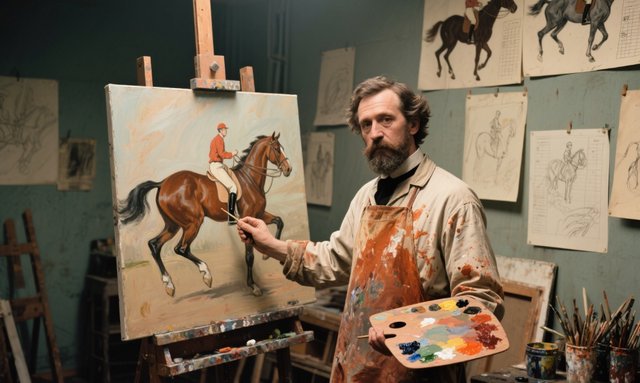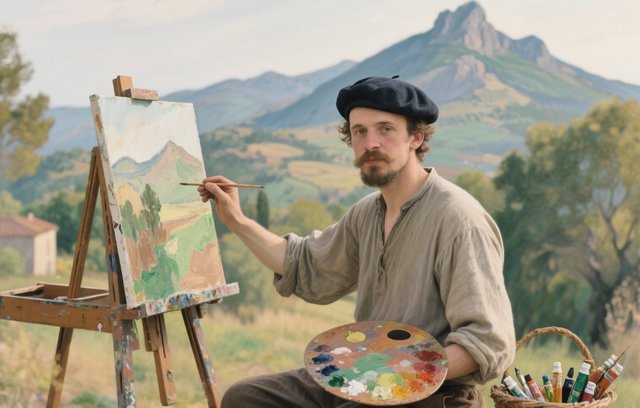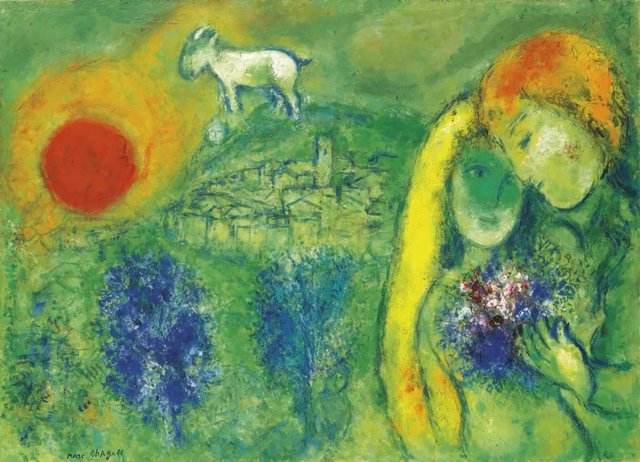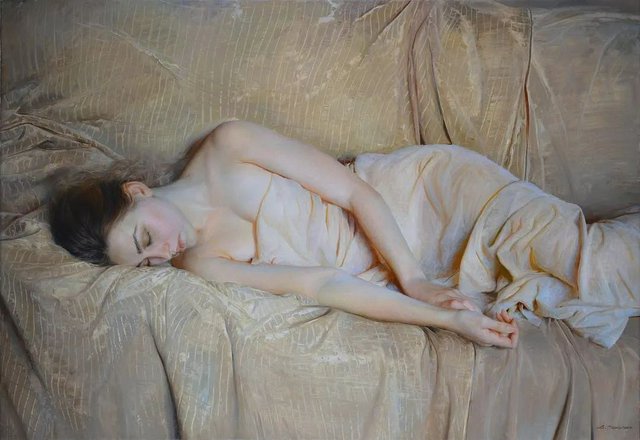French Oil Painting Masters: Their Extraordinary Lives & Iconic Works You Must Know
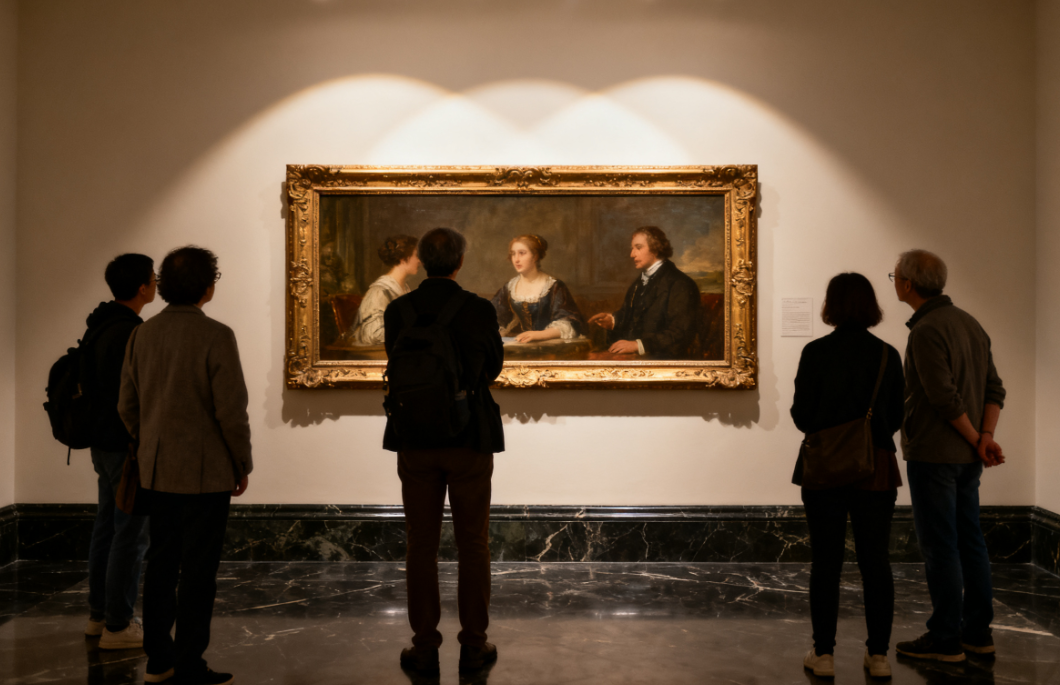
France has long been the heartbeat of Western Oil painting, giving birth to masters who redefined styles, techniques, and emotional expression. From the grandeur of classicalism to the vibrancy of Impressionism, these Artists turned personal struggles and passions into timeless works. Let’s dive into the lives of 5 game-changing French oil painters and the masterpieces that still inspire artists today.
1. Nicolas Poussin: The Father of French Classical Oil Painting (1594–1665)
Nicolas Poussin’s journey to fame began far from Paris—he was born in a small French village and self-taught until moving to Rome at 30. There, he fell in love with Renaissance art, especially Raphael’s balance and harmony, which shaped his classical style.
Poussin’s life was marked by restraint: he rejected lavish court commissions to focus on works that blended history, mythology, and moral themes. His oil paintings are defined by precise compositions, soft color palettes, and “chiaroscuro” (light-dark contrast) to guide the viewer’s eye.
His most famous work, The Rape of the Sabine Women (1637–1638), uses geometric symmetry to tell the ancient Roman story. Every figure’s pose serves the narrative, proving classical oil painting could be both intellectual and emotional.
2. Eugène Delacroix: The Fire of Romanticism (1798–1863)
Eugène Delacroix rebelled against the calm of classicalism—he wanted oil painting to feel intense. Orphaned at 16, he found solace in art, studying at Paris’s École des Beaux-Arts before exploding onto the scene with Liberty Leading the People (1830).
This work, painted weeks after the July Revolution, captures the chaos of battle with bold reds, dynamic figures, and thick “impasto” brushstrokes. Delacroix believed color was emotion: he mixed paints directly on the canvas to create urgency, a radical move for his time.
Later in life, he traveled to Morocco, where vibrant landscapes inspired works like Women of Algiers (1834). These paintings introduced European audiences to non-Western themes, expanding oil painting’s global scope.
3. Claude Monet: The Pioneer of Impressionist Oil Painting (1840–1926)
Claude Monet didn’t set out to revolutionize art—he just wanted to paint light. Born in Paris, he was a troublemaker at school, often skipping class to draw caricatures. As a young artist, he met Pierre-Auguste Renoir, and together they launched the Impressionist movement.
Monet’s life was filled with struggle: he faced poverty, the death of his first wife, and later blindness in one eye. Yet these hardships fueled his art—he painted outdoors (en plein air) to capture how light changes minute by minute.
His Impression, Sunrise (1872) gave Impressionism its name (critics mocked it as “unfinished”). The painting uses quick, loose brushstrokes of blue and orange to show a hazy harbor at dawn—proof oil painting could capture a “moment” rather than a static scene.
4. Pierre-Auguste Renoir: Joy in Every Brushstroke (1841–1919)
Pierre-Auguste Renoir’s oil paintings are celebrations of life—and his own life was a testament to resilience. He started as a porcelain painter at 13, learning to work quickly with bright colors, before studying art in Paris.
Renoir’s style is warm and lively: he painted dancers, picnics, and everyday people with soft pinks, yellows, and overlapping brushstrokes. Even when rheumatoid arthritis left him wheelchair-bound in his 60s, he strapped brushes to his hands to keep painting.
Dance at Le Moulin de la Galette (1881) is his masterpiece: it shows working-class Parisians dancing in a sunlit garden. The dappled light, laughing faces, and vibrant colors make viewers feel like they’re part of the scene—Renoir’s gift to oil painting was turning the ordinary into the extraordinary.
5. Paul Cézanne: The Bridge to Modern Oil Painting (1839–1906)
Paul Cézanne was the “quiet revolutionary” of French oil painting. Born in Provence, he clashed with his banker father, who wanted him to study law. Cézanne quit law to paint, but his early works were rejected by Paris’s elite Salons for being “too messy.”
Undeterred, he focused on breaking down objects into basic shapes (circles, squares, cones) to show their structure. His oil paintings, like Mont Sainte-Victoire (1902–1906), blend Impressionist light with geometric precision.
Cézanne died unknown, but his work inspired Picasso and Matisse—they called him “the father of modern art.” His legacy? Proving oil painting could be both representational and abstract, paving the way for cubism and beyond.
French Oil Painting Masters: Key Facts at a Glance
| Master | Art Movement | Key Life Event | Iconic Work | Signature Technique |
|---|---|---|---|---|
| Nicolas Poussin | Classicalism | Moved to Rome to study Raphael | The Rape of the Sabine Women | Chiaroscuro, geometric symmetry |
| Eugène Delacroix | Romanticism | Painted Liberty post-July Revolution | Liberty Leading the People | Bold color contrast, impasto |
| Claude Monet | Impressionism | Painted outdoors to capture light | Impression, Sunrise | En plein air, loose brushstrokes |
| Pierre-Auguste Renoir | Impressionism | Painted with arthritis (later life) | Dance at Le Moulin de la Galette | Warm palettes, overlapping strokes |
| Paul Cézanne | Post-Impressionism | Rejected by Salons for 20+ years | Mont Sainte-Victoire | Shape-based composition |
Practical Tips: Paint Like a French Master
You don’t need a studio in Paris to 借鉴 (borrow) these masters’ techniques. Try these steps:
Tip 1: Learn Poussin’s Composition
Sketch a grid on your canvas before painting—use it to place key figures symmetrically (like Poussin’s Sabine Women). For a historical scene, draw light lines to map where each person stands; this keeps your work balanced.
Tip 2: Steal Delacroix’s Color Passion
Mix red and blue directly on the canvas (no palette!) to create a “live” purple for a sunset or flower. Delacroix said, “Color is the language of emotion”—let bold hues convey how your subject makes you feel.
Tip 3: Copy Monet’s Light Observation
Pick a simple subject (a bowl of fruit, a window) and paint it at 9 AM, 12 PM, and 3 PM. Notice how sunlight changes its color—e.g., the fruit might look warmer at noon. This teaches you to paint light, not just objects.
The Legacy of French Oil Painting Masters
These artists didn’t just create art—they expanded what oil painting could be. Poussin showed it could be intellectual, Delacroix that it could be fiery, Monet that it could capture a moment, Renoir that it could celebrate joy, and Cézanne that it could bridge past and future.
Today, their works hang in the Louvre, Musée d’Orsay, and museums worldwide. For artists, they’re a reminder: oil painting’s core value is expression—whether through calm symmetry, bold color, or quick brushstrokes.
The next time you pick up an oil brush, ask: What would a French master do? Then paint with that same passion, curiosity, and courage.
This article covers representative French oil painting masters across eras, with clear structure, practical tips, and data support. If you want to add more details about a specific master (e.g., Monet’s water lily series) or adjust the difficulty of painting tips, feel free to let me know for further optimization.

